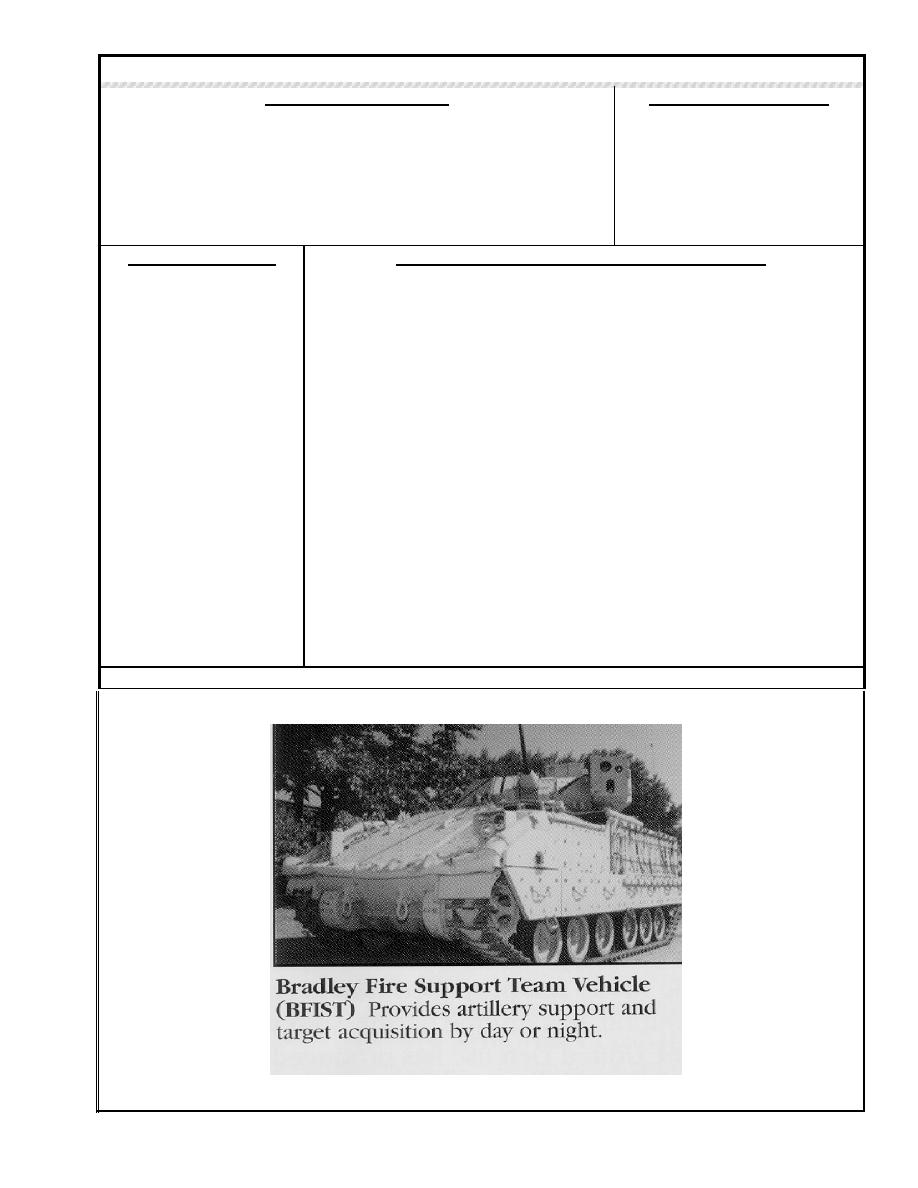 |
|||
|
|
|||
|
Page Title:
BFIST (Bradley Fire Support Team Vehicle) |
|
||
| ||||||||||
|
|  BFIST (Bradley Fire Support Team Vehicle)
SYSTEM DESCRIPTION
SYSTEM PARAMETERS
The BFIST provides automated enhanced surveillance, target identification and
Type: Nd:Yag (G/VLLD)
acquisition, tracking position, location and communications in tactical
maneuvering. The BFIST utilizes three sources of optical radiation. These
Wavelength: 1064 nm (AN/TVQ-2)
sources are the AN/TVQ-2 or G/VLLD Laser Rangefinder/designator, the Bradley
1540 nm (G/VLLD)
Laser Rangefinder (BLRF), and the Missile Countermeasure Device (MCD).
CLASSIFIED (MCD)
SYSTEM HAZARDS
HAZARD CONTROLS (to reduce or eliminate risk)
Laser Classification..............
The G/VLLD system contains a Class 4 laser and requires an established laser safety
program to ensure its safe use. Develop a written Local Standing Operating Procedure
(SOP) IAW guidance provided in this TB. The BLRF contains a Class 1 laser and is
considered safe. The MCD is CLASSIFIED and is not considered an occupational health
hazard.
Laser Hazard distance ..........
Utilizing the 10 dB attenuation filter with the G/VLLD and in the rangefinder mode, the
hazard distances for viewing the laser is 3.1 km with the naked eye and 22 km with
magnifying optics.
Ocular injury .....................
This G/VLLD laser is hazardous to the naked eye for a distance of 8 km and 40 km for
viewing with magnifying optics. Use protective eyewear that filter at 1064 nm with a
minimum OD of 5.5.
Outdoor range operations .....
When using the G/VLLD, eliminate all specular surfaces (man made and natural) capable
of producing potentially hazardous reflections. Control unauthorized personnel access to
controlled area. Use only on an approved laser range or training area. Appoint a qualified
Laser Range Safety Officer.
Other...............................
Consult the equipment Technical Manual for other operator and/or maintenance hazards.
Equipment - 177
|
|
Privacy Statement - Press Release - Copyright Information. - Contact Us |